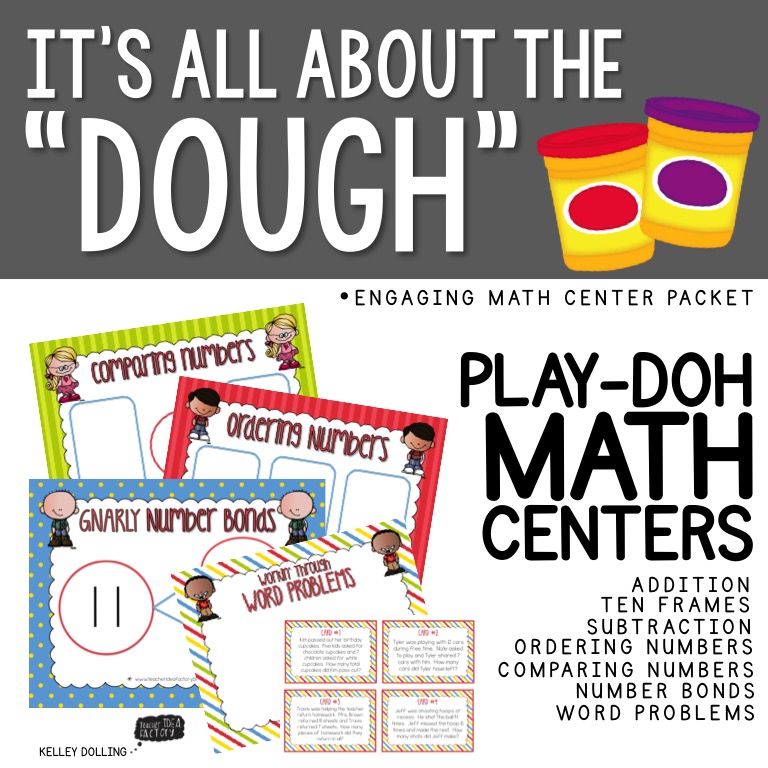There is one math center quasi manipulative that upstages all of the others. Our students already have fond prior knowledge surrounding this item which makes engagement go through the roof. This one toy turned tool is all you need to toss at your kids to have them beggin’ for more math! What is this item you ask? PLAY-DOH (play dough if we are going to get uber technical). Make it or buy it . . . this is the magic bullet in the mathematics department.
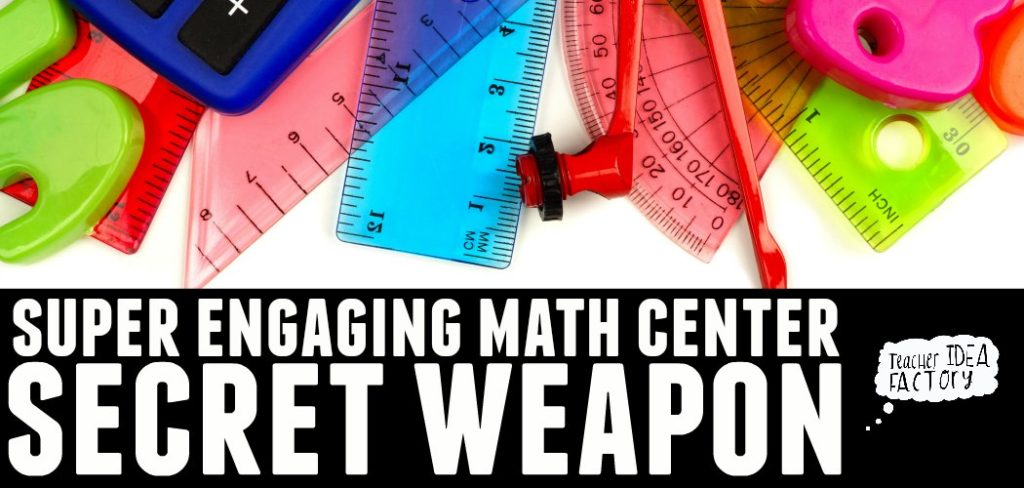
I know many of you already use dough during centers . . . but, maybe there are a few ideas hidden in here that you didn’t even think about trying. If we work outside of the normal play dough confines, there are so many different ways to use it to tackle all sorts of math standards and concepts. The only trick is to figure out how to use the Play-Doh just enough to have the kids hooked, but not so much that they aren’t really completing much math. With all this said, here are just a few ideas that I have run with successfully over the years . . .
NUMBER EATIN’ ALLIGATOR
Comparing numbers takes on a new flavor when the kids incorporate Play-Doh math symbols. To roll with this center game, make and laminate a play dough mat that contains two boxes with a circle in the middle (see my version below). Each student needs a can of dough, two 6 or 10-sided dice, a white board marker, and one mat. Students roll the dice two times (they are building TWO two-digit numbers). These digits are written in white board marker inside the number boxes on the mat. The student then compares the two numbers and rolls out the greater than/less than sign in dough and places it in the circle on their activity mat. Work is then transferred to a corresponding comparing numbers sheet or into a math notebook.
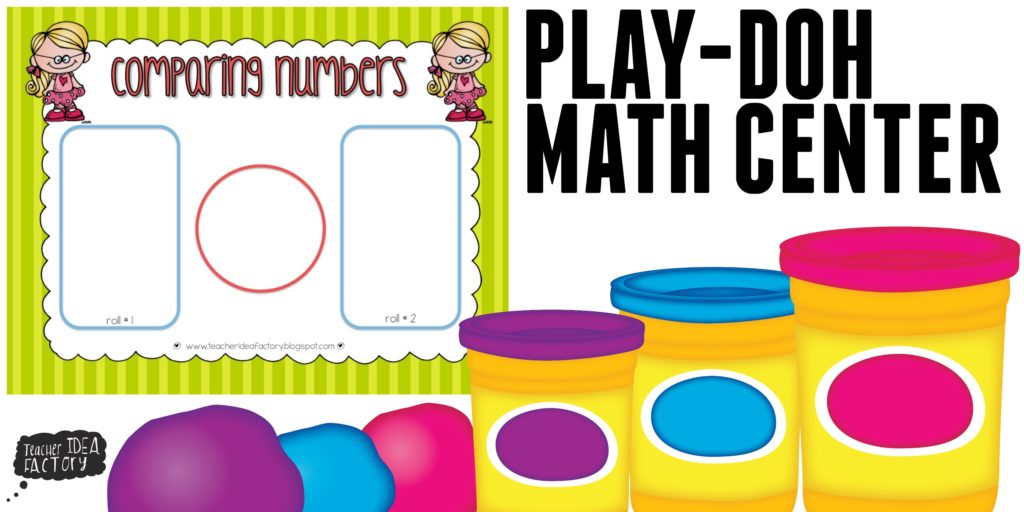
**NOTE – If you are a second or third grade teacher, this can still work for you! Simply use additional dice, cards, or even a spinner to create larger numbers in the hundreds or even thousands. You may have them roll out all of the numbers, but as I stated above, using the dough that much isn’t always the best use of our time 😛
GNARLY NUMBER BONDS
Number bonds are huge in the primary grades. The kids need to work with this concept AS MUCH AS POSSIBLE. Therefore, I made up a bond game a couple of years back. There are a few ways that you can play this in your classroom.
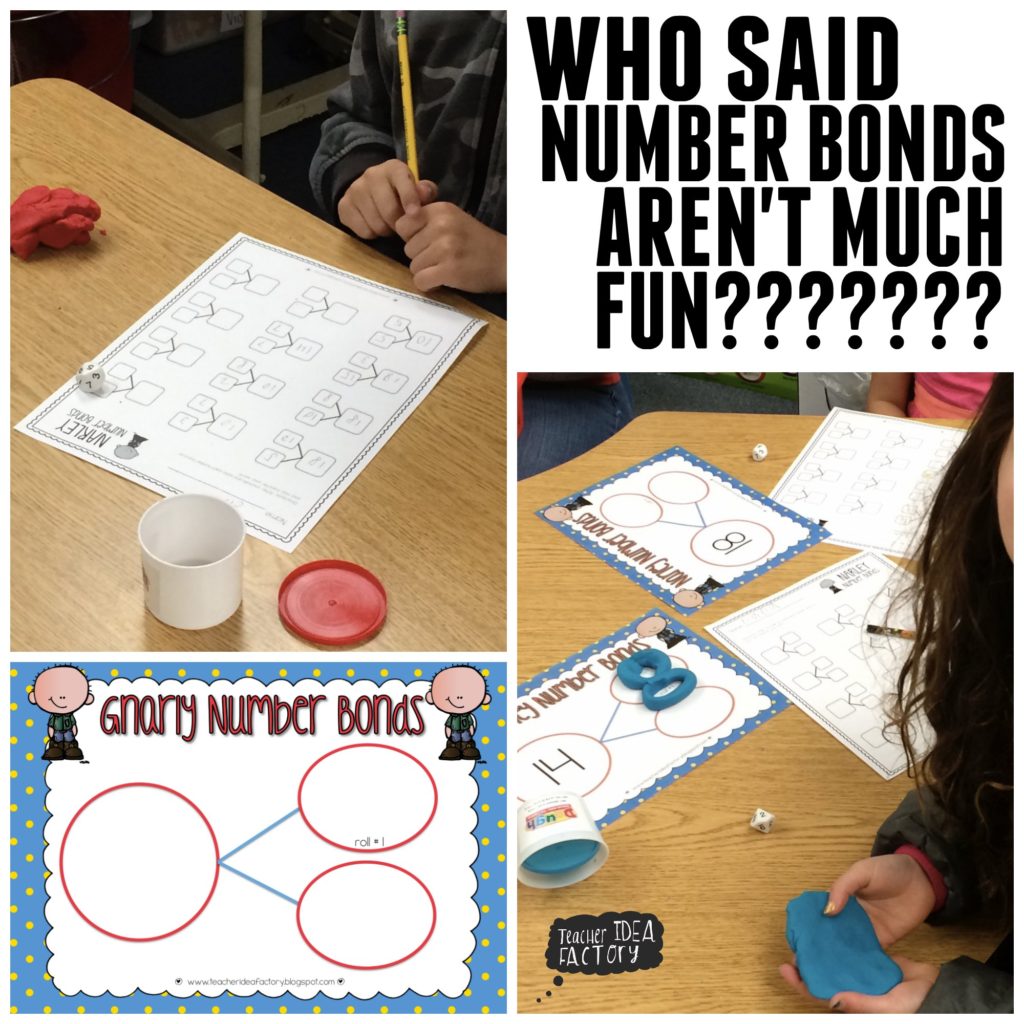
Make and laminate a set of number bond mats. You may choose to have one completely empty number bond or multiple versions with the WHOLE circle completed (different numbers). Each student within this center will need a mat of choice, one 6 or 10-sided die, a white board marker, and the corresponding activity sheet.
If you jump on the blank bond, students roll a 6 or 10-sided die two times and record these in the “part” circles on their bond mat. The two numbers are then added and the sum is built in dough and placed in the “whole” circle. You may have your kiddos transfer their work to a bond worksheet as the roll, make, and solve each problem.
If you choose to up the game a bit and work on missing addend, you will need to stock your center with a bunch of bond mats that have the “whole” completed. Students roll a 10-sided die one time and build this number in one of the “part” circles on the bond. Students then figure out the missing addend and build or write this number in the remaining “part” circle. You may choose to have your students keep the same card for all or part of the center time. Again, you may choose to have your students transfer their work to a bond worksheet as they roll, make, and solve each problem.
WILD WORD PROBLEMS
Ever thought of using Play-Doh as a tool for solving word problems? Sure, the kids can just draw circles, but isn’t rolling out snakes or balls of dough so much more fun. I’m not saying that you forever use this tactic. However, mixin’ it up with this one from time to time is just the ticket.
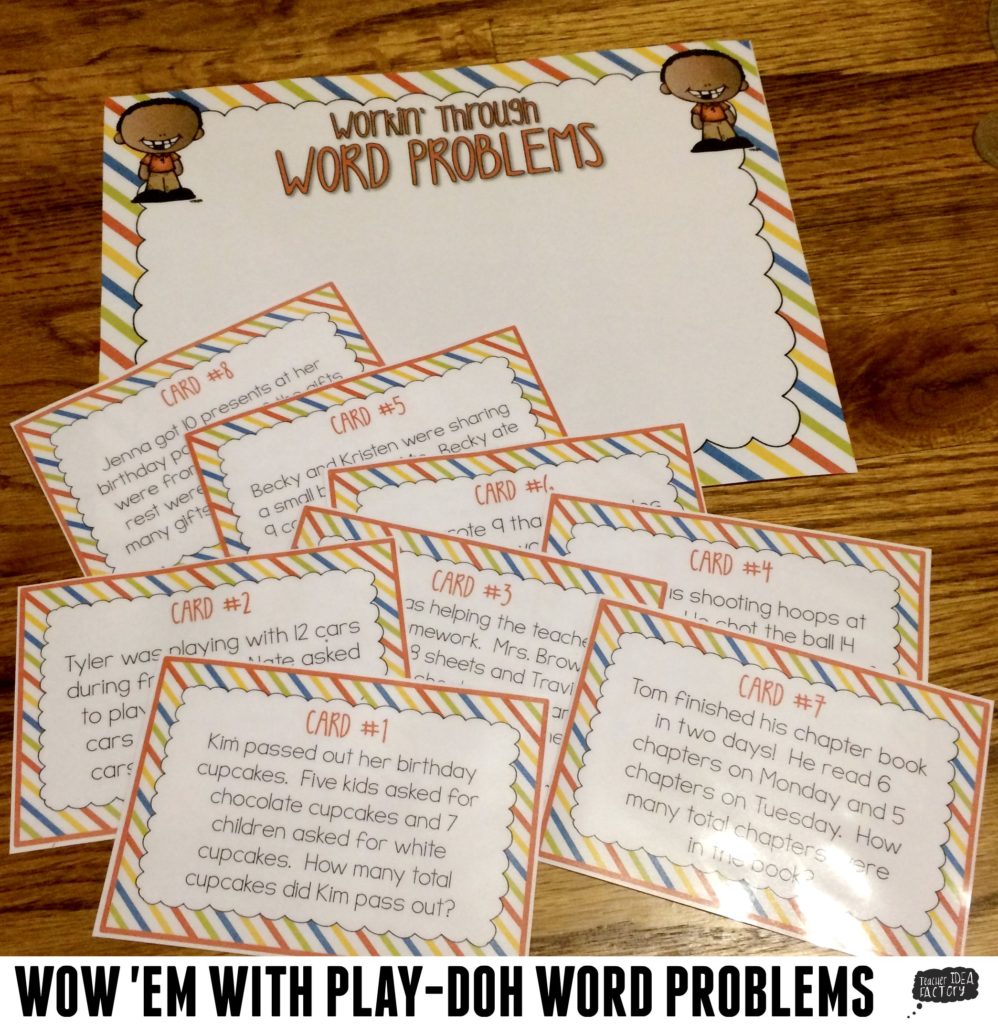
TERRIFIC TEN FRAMES
Ten frames are all the rage in Kinder and the beginning of first. Once we have been introduced to the concept, why not start using dough to help us show equations in the frame? Oh, baby . . . now that’s what I call a good time! I whipped one of these up today as this idea came to me as I was typing up this post. I couldn’t keep it to myself and not share a little bit today. You can snag this fun freebie HERE!
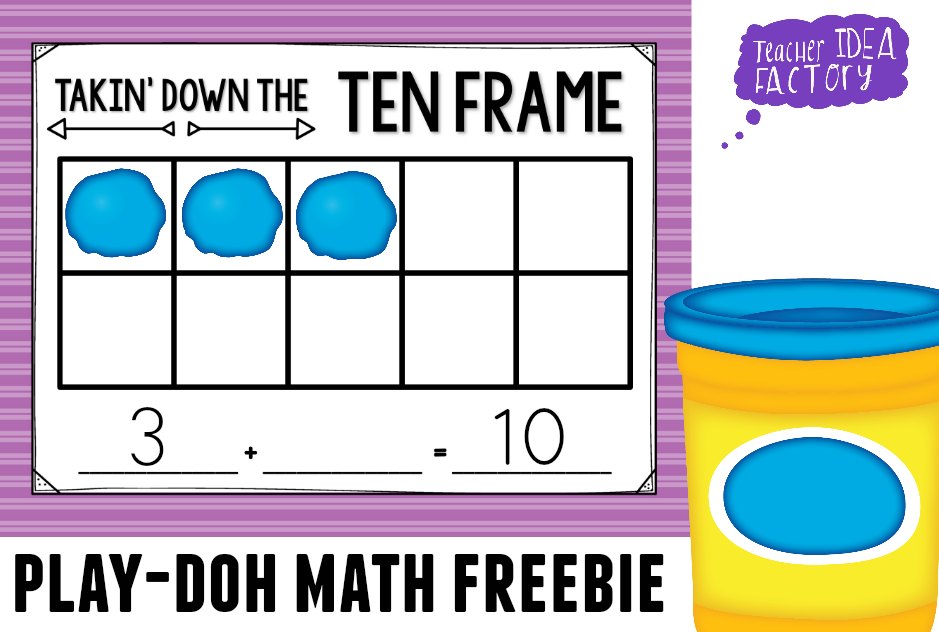
Before I jet today, here are a few final tips. Please know that I am not saying that Play-Doh should be a constant manipulative, but it can be highly effective when brought into the mix on occasion. Just be sure that you FRONTLOAD your expectations and dough rules. I always tell my students, complete the task . . . keep using the dough. Dink around with the dough . . . lose the privilege. You will have at least one sweetie every year who tries this. I unemotionally trade it for counting beans and secretly love watching their face fall (horrid I know, but they typically won’t dink again).
Also, there’s nothing more unenjoyable than finding Play-Doh smashed into your carpet and it can make your desks pretty unsightly. I like to use plastic place mats under my activity sheets. I train my kids to roll out the dough on the place mat before transferring it to the game mat. Cookie sheets also work well.
Alright, so there you have it. A post dedicated to tossing some dough at your kids during math centers. All of these centers and more are available in my TPT Shop. Sure, you can always make these yourself, but if you are looking to save time, I have you covered. Thanks for visiting me today. I’ll see you again soon.
